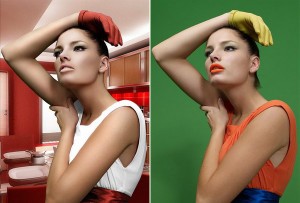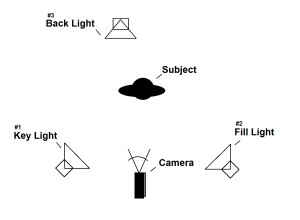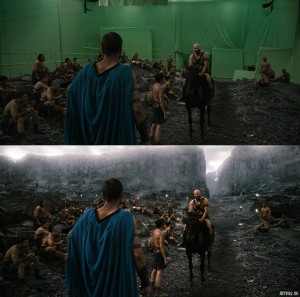Blog
Secrets of green background
First of all what is a green background?
For beginners, you should know that a green background is the idea of filming a person or object in front of a colored background in order to process the result using a software. Thus, this color will become transparent and it will be possible to switch the colored background and turn it into a still image or moving, depending on what you want.
This is how Bruce Wayne finds himself jumping from a 1650 ft building without parachute and the top models with advantageous proportions can be both in a Norwegian fjord and a minute later be on an idyllic beach in Papua New Guinea. Or simply Evelyne Dhéliat presenting the weather on TF1 for many years.

Why green?
Very often it happens that it is a human being that must be embedded in a new setting so he has to pose in frond of a background. This background must be as efficient as possible and no important members must disappear from the anatomy of the person. Green being the farthest color shades from human skin, this is why the color green is used.
In addition, video cameras are most sensitive to green, the green fund require less lighting, which can be handy. The green background is preferred over blue background for filming outdoors because the sky might appear under and be replaced inadvertently.
The most important factor for successful overlay is color separation between the foreground (subject) and the background (the screen).
It is also important to choose the right green, it must be green with the most possible green. This is why it is interesting to know the compound of the chosen color mixing; for example with a composition R, G, B (red, green, blue) or the value of G (green) is the largest.
The lighting in your green background is important, it should not be overlooked because good lighting is several hours gained in post-production. The green background must be uniformly illuminated, using a diffused light can be a good solution. Contrasting lights are banned.

A rule can be applied, it is the rule of “standard Three-Point Lighting.” It involves placing the object / character at the center of the green background and then place a first main light (key light) on one side of the character. This setting will create a lot of shadows which will have to be soften. For this, a fill light (fill light), will work hand in hand with the main light, brighten the shadows generated by the key light, the shadows will no longer be completely black. Fill light may be replaced by a reflector which provides a soft and more diffuse light.
Finally a backlight (back light) placed at the back of the character directed towards him will allow the subject to detach from the background. As indicated above, successful inlay depends largely on the separation of character and background.
Filming or shooting on green background is an exciting opportunity for “rigging” a video, photo or interview. Keep in mind that this is not an easy filming method to realize and that it is important to work with professionals who can guide you and accompany you during the shooting.

Our tips for successful shoot with green background:
- – The subject must set the furthest possible from the green background
- – Properly light your green background
- – Correctly illuminate your subject
- – Use a good camera at full resolution
- – Take a green background as pure as possible
- – No green on the subject
